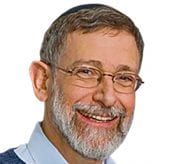The Rabbinic Mind: Struggling With Idols

Adam HaRishon clearly knew about God, and apparently did not have any leaning toward idol worship or any form of avodah zarah. So how did it happen that his descendants got off the track and became idol worshippers? And when Avraham Avinu came on the scene, how did he succeed in going against the prevailing practices and beliefs and return to monotheism? Join Rabbi Yitzhak Zuriel and examine these and related questions by a study of passages in the Talmud and midrashim.
 Timezone
Timezone
 Time of Class
Time of Class
The Rabbinic Mind: Struggling With Idols: Early generations: Adam HaRishon, Sheyt (Seth), Enosh
In this first session of this series, we will learn Talmudic-period sources about the first generations of people: Adam HaRishon and the generations of his children and grandchildren. To what extent were they righteous? Besides the major failure of Adam HaRishon in disobeying G-d’s command and eating the forbidden fruit, did he and his family generally keep faith with G-d and obey him? We will begin to explore where the generation of Enosh seems to have spiritually lost its way.
I have posted here sourcs that we will be studying in this session.
The Rabbinic Mind: Struggling With Idols: The first missteps: the generations of Sheyt and Enosh
We are moving on to the two generations that followed Adam HaRishon. We will learn how they were seen, by the sages in the Talmudic period midrashim, to be different from the descendants of Adam HaRishon of subsequent generations. And we will encounter the way that the midrashim understand — based on a few unclear words in the Torah — what changed in the generation of Enosh. We will see how the Rambam later describes in detail this change, which constituted the first step on the road to idolatry.
I have posted the sources for this session here for your convenience.
The Rabbinic Mind: Struggling With Idols: From Enosh to Hanoch
In this session, we will continue our discussion regarding the generation of Enosh by studying an additional midrashic source and two commentaries on the relevant verse. Following this, we will study the first part of chapter 1 of the Rambam in the Mishneh Torah Hilchot Avodat Kochavim, where the origins of pagan worship in that generation are described in some detail and given context.
Following this, we will move on to the generation of Hanoch and study midrashic interpretations of the unusual verses that describe his life and what if anything was amiss at that time.
I have posted here sources that we will be studying in the class, for your convenience; as always you are welcome to look at these before the class.
The Rabbinic Mind: Struggling With Idols: Idolatry gets pervasive: Hanoch, Noach’s generation, Nimrod; Shem and Eiver
In this fourth session in our series, we will first clarify the imperfect picture we had of the personality of Hanoch in the material from last session , and see how the sages in the midrash take the ambiguities in the Torah text about his life in extremely different directions.
Then we will see how, in the view of the midrashic sources, idolatry seems to have become normative and mainstream in the subsequent generations immediately before, and long after, the Flood, with the apparently noteworthy exceptions of certain individuals such as Shem and Eiver.
The Rabbinic Mind: Struggling With Idols: The Rabbinic Mind: Struggling With Idols
The Rabbinic Mind: Struggling With Idols: The Rabbinic Mind: Struggling With Idols
The Rabbinic Mind: Struggling With Idols: The Rabbinic Mind: Struggling With Idols
The Rabbinic Mind: Struggling With Idols: The Rabbinic Mind: Struggling With Idols
Rabbi Yitzhak Zuriel has been enjoying guiding students in how to learn and understand Talmud at WebYeshiva.org since its founding. He began his teaching career as a teacher and educational director at Michlelet Bruria in the 1980s. For over 20 years, he has been working as a software engineer in Jerusalem, and during that time has been an editor and contributor to the company NDS's Torah journal, Chiddushei Torah@NDS, that was published annually from 1996-2014 . He and his wife reside in Ma'ale Adumim and are parents to five children and have many grandchildren.

